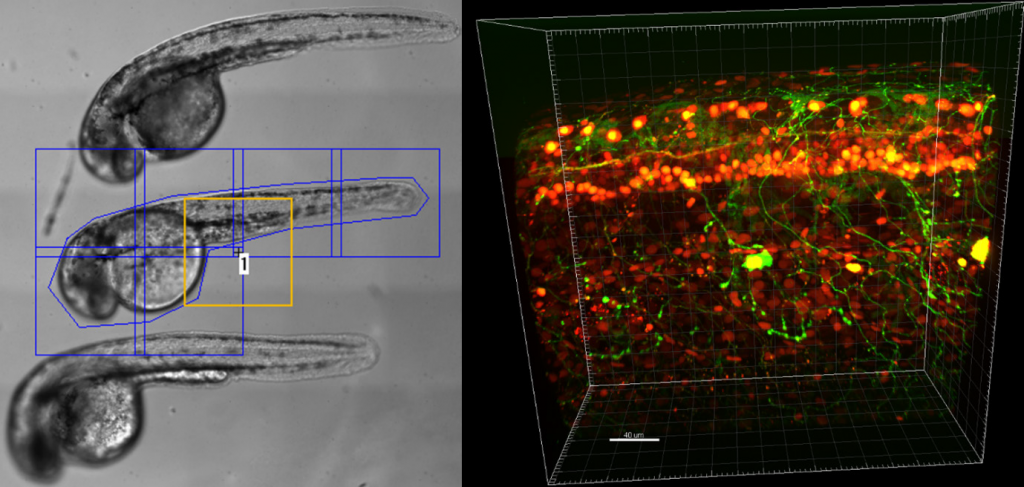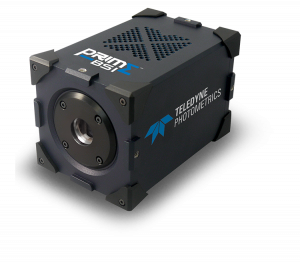Dr. Urs Ziegler
Dr. Joana Delgado Martins
Center for Microscopy and Image Analysis, University of Zurich, Switzerland
Background
Dr. Joana Delgado Martins is a research associate at the Center for Microscopy and Image Analysis, a facility at the University of Zurich, which is run by Dr. Urs Ziegler. The center has recently acquired a new Olympus SpinSR SoRa system along with two Prime BSI cameras.
Dr. Martins works closely alongside researchers to improve imaging in a variety of different applications. Dr. Martins explained, “We have a wide variety of users within the facility, so the systems are used for investigation of a host of different applications and sample types, ranging from whole organism research to live cell and tissue imaging.”
The facility required a system and camera combination that would provide the best imaging for a variety of users and applications. One group uses the facility to perform time-lapse imaging of zebrafish embryos. Through the expression of mCherry in the nuclei and a neuronal marker, it is possible to see the structure very nicely with spinning disk systems.

Challenge
Dr. Martins told us that, prior to the purchase of the SpinSR and BSI system, the systems available were limited in their ability to permit live-cell imaging at high resolution. Often, users suffered low sensitivity and photodamage issues. Dr. Martins told us “We were not able to perform some live-cell experiments because we didn’t have enough signal and would have to expose cells to high light doses which frequently lead to photodamage.”
Dr. Martins went on to mention that “We wanted to find a system that could offer sensitivity and the best performance to a majority of users. Due to the broad range of applications, the biggest challenge was finding a system that suits most of the users most of the time for their specific applications.”
The system combines the high speed of the spinning disk with the field of view and sensitivity of the Photometrics cameras. Together it allows us to do live imaging with weak samples, giving great performance.
Solution
The Center for Microscopy and Image Analysis at the University of Zurich is now using the combination of the Olympus SpinSR super-resolution spinning disk system with dual Prime BSI cameras.
Dr. Martins told us, “For high-resolution investigations, the cameras and the SpinSR together have been really a great advantage in terms of what we can image. The system combines the high speed of spinning disk with the field of view and sensitivity of the Photometrics cameras. Together it allows us to do live imaging with weak samples, giving great performance… For all our experiments the cameras have been really nice in terms of field of view and sensitivity. We have a big field of view for fixed tissue or live-cell imaging expressing fluorescent probes.”
Dr. Martins added, “We have also seen a great improvement in photobleaching and photodamage. Partly because of the sensitivity of the camera but also because of the Real-Time Controller (RTC) implementation by Olympus which works well with the Prime BSI, allowing reductions in the exposure during live imaging which really helps.”
The facility is now also trying out other super-resolution approaches such as SRRF (Super-resolution radial fluctuations) where multiple images (typically 50-100) are required to derive a single super-resolved output image. The Prime BSI cameras are ideal to acquire such data sets with relatively low exposures and fast sampling allowing fast acquisition of super-resolved multicolor images. Dr. Martins said “By combining the two Prime BSI cameras with super-resolution spinning disk confocal microscopy we are able to acquire super-resolved multicolor images… Overall, we are very happy with the performance of the cameras and spinning disk combined.”

